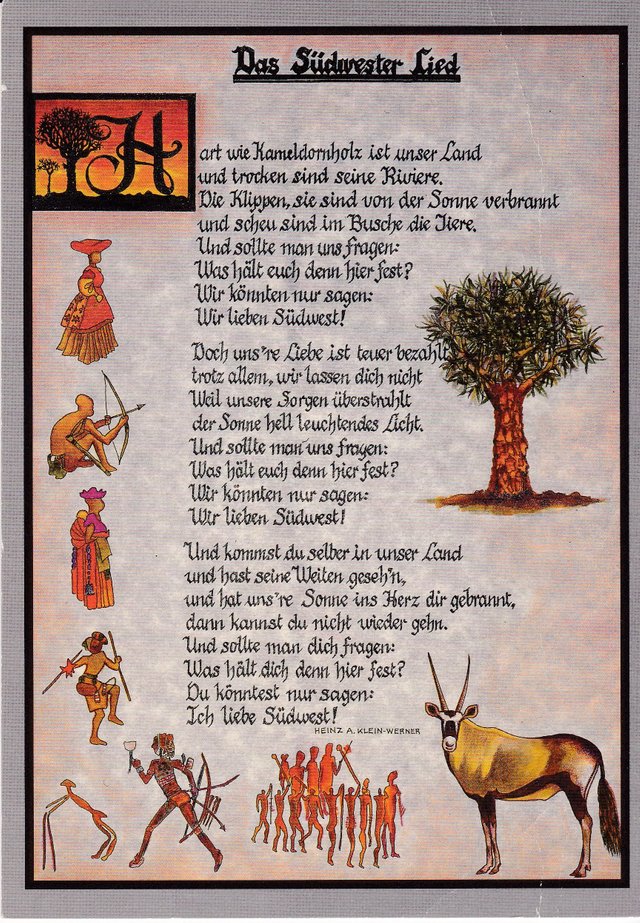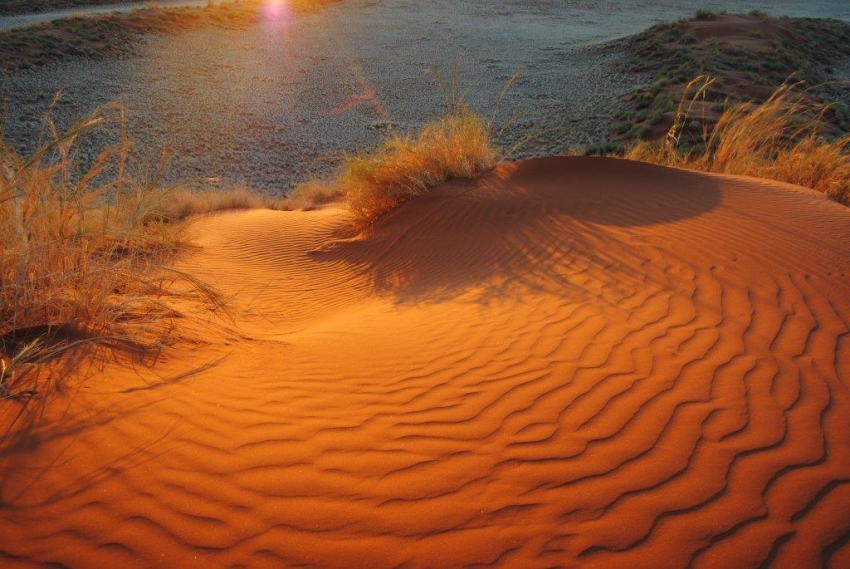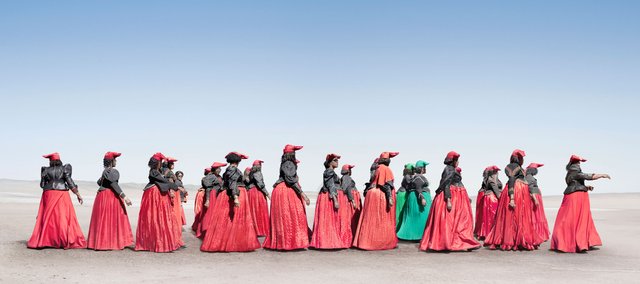NAMIBIA, land between deserts.

Although in German this anthem of the old South West Africa (Nambia) depicts the land as it is.
it speaks about land of the Camel thorn, dry Rivers, sunburnt Rocks and tigers in the bush, and ending with we love South West!

There is a saying that once you have walked in a pair of shoes in Namibia, the your heart will always be there. is a land of contrasts of rich culture, sparsely populated, and on Africa's South West Coast. Bordered by Angola to the North, Zambia to the North East, Botswana to the East, South Africa to the South East, and the Atlantic to the West. The land ranges from Arid soil in North to desert to the coast of the East.
The landscapes are spectacular, with the most unbelievable sunsets ranging from dark red, to bright orange, and clear blue sky.
There are only a few flowing rivers in Namibia. Water is a scarce commodity, and in Windhoek water is recycled.
Climate ranges from area to area, with cold nights and warm to very hot days.
The coastal Namib desert has treacherous reefs and shoals, and many shipwrecks as well as the remains of skeletons of various animals can be seen along the coastline.Aptly called Skeleton Coast. Remains of first settler homes are still found among the dunes, preserved by the salty dry air. The houses were built by diamond and salt miners, but abandoned as a result of the climate.
Interesting is that some of the roads in Walvis bay were made by compacting salt from the mines!
Most of the land cannot be cultivated, but the Central Plateau (altitude between 3200 to 6500 feet, ;where the core if agricultural activities are. In the North it borders on the Kunene and Okavango River Valleys, and to the South on the Orange river.The landscape is wooded in parts with hills and mountains, and ravines (Fish River Canyon), and Salt Pans, (Etosha Pan). In the East Namibia slopes, and the Savannah merges into the Kalahari.
In the North hardpan and rock beneath the sand, and more abundant water and rainfall, results in herding and agriculture. Namibia is characterized by a variety of fragile desert plants, well known to the indigenous desert inhabitants both human and animal for water and food . Varieties of Aloe, used as medicine as well as a food source can be found.
There are a number of ethnic groups in Namibia, Nama, Rehoboth( coloured people a mixture of German, and local people mostly) Ovambo, Kavango, Herero and Damara, a minority of German and other Europeans.
Herero people are well known for their spectacular dresses. ;Brightly colored ;with layers;wide skirts covering over the ankles, and the early German head dresses. ;Legend had it that their King ordered the women to cover themselves up so that the invading German men would leave them alone.!It is a display of colors when they have their yearly parades.

Some of the rarest desert plants are the Welwitschia, a plant that only produces two leaves in its entire lifetime. It looks like a bundle of long leaves and can spread a couple of meters. a source of food for animals and humans alike in time of need...the local people calls it n'tumbo. It is believed that seeds are only formed about every ten years. The plant is a protected species.
The variety of Aloes, that abounds, are used both as food and medicine by the local people,
Etosha pan, and Grootfontein is the center point for wild life, with the big five in the past abundantly roaming the Pan, and an interesting area where elephants go to die, called the Elephants graveyard, bordering the Etosha.
Windhoek is the hub of commercial activity, situated among the hills, with beautiful old buildings, modern amenities,schools, hospitals, and hotels, and a good travel destination.
It is a country that grows on the people, and I personally love the land.
Really good post brother